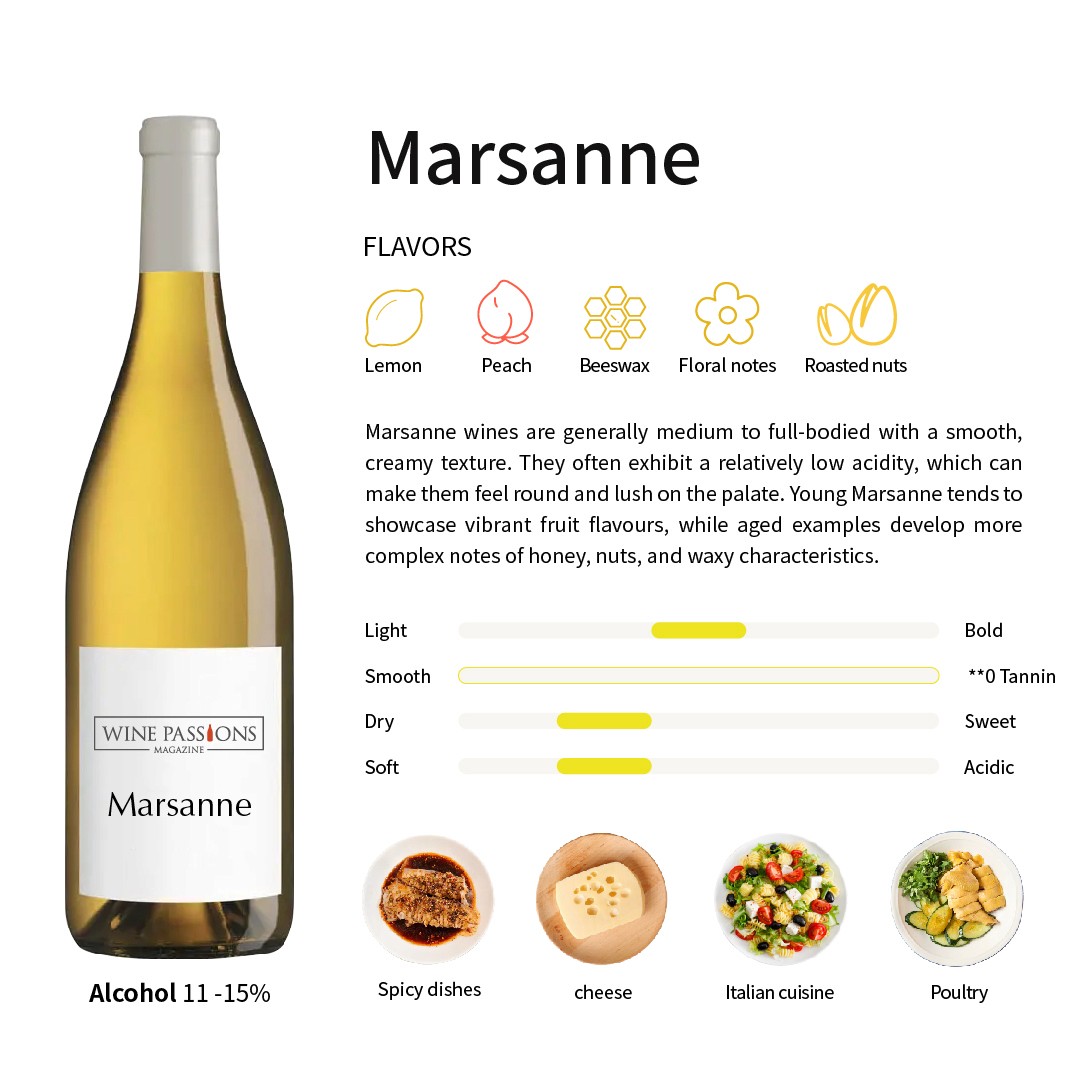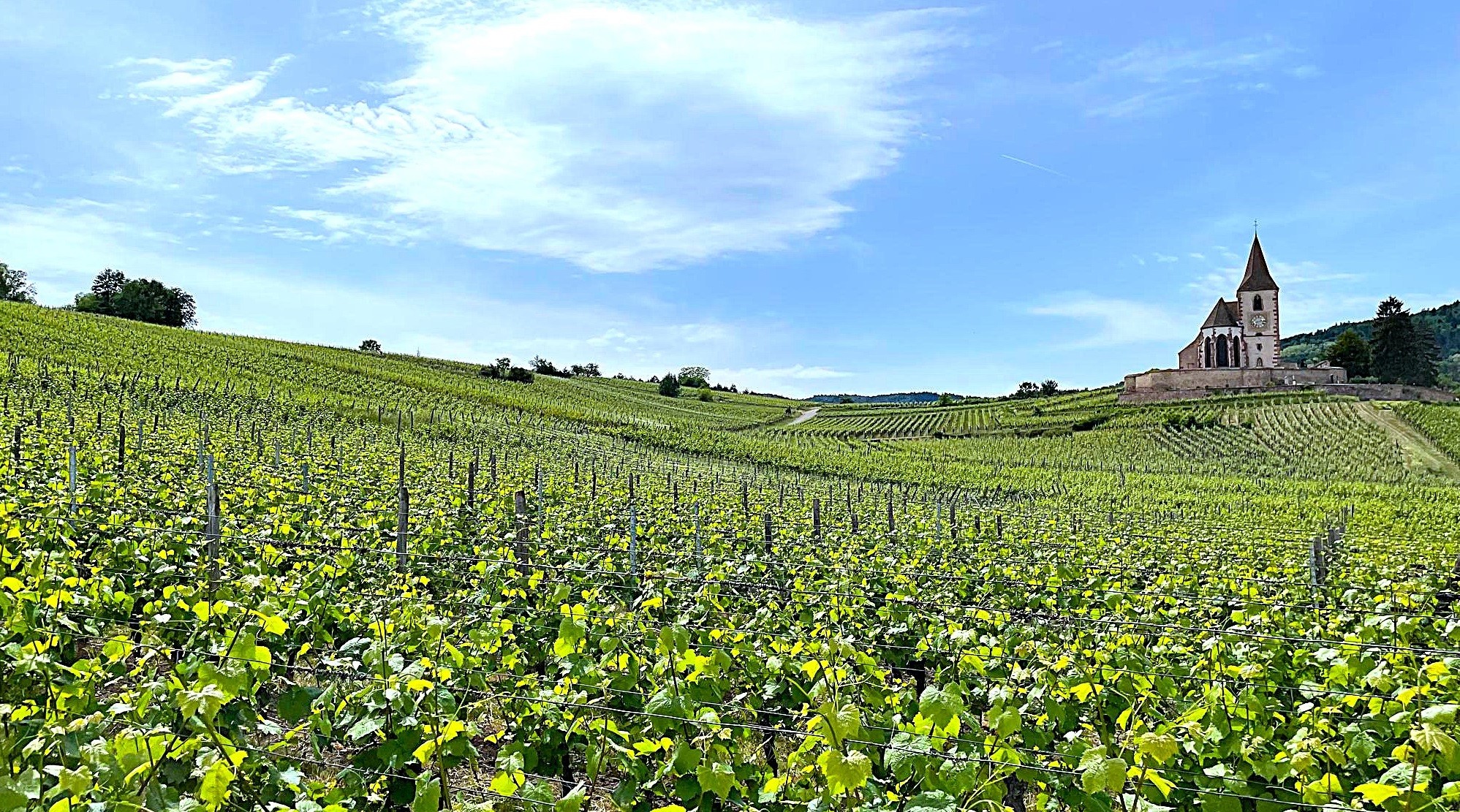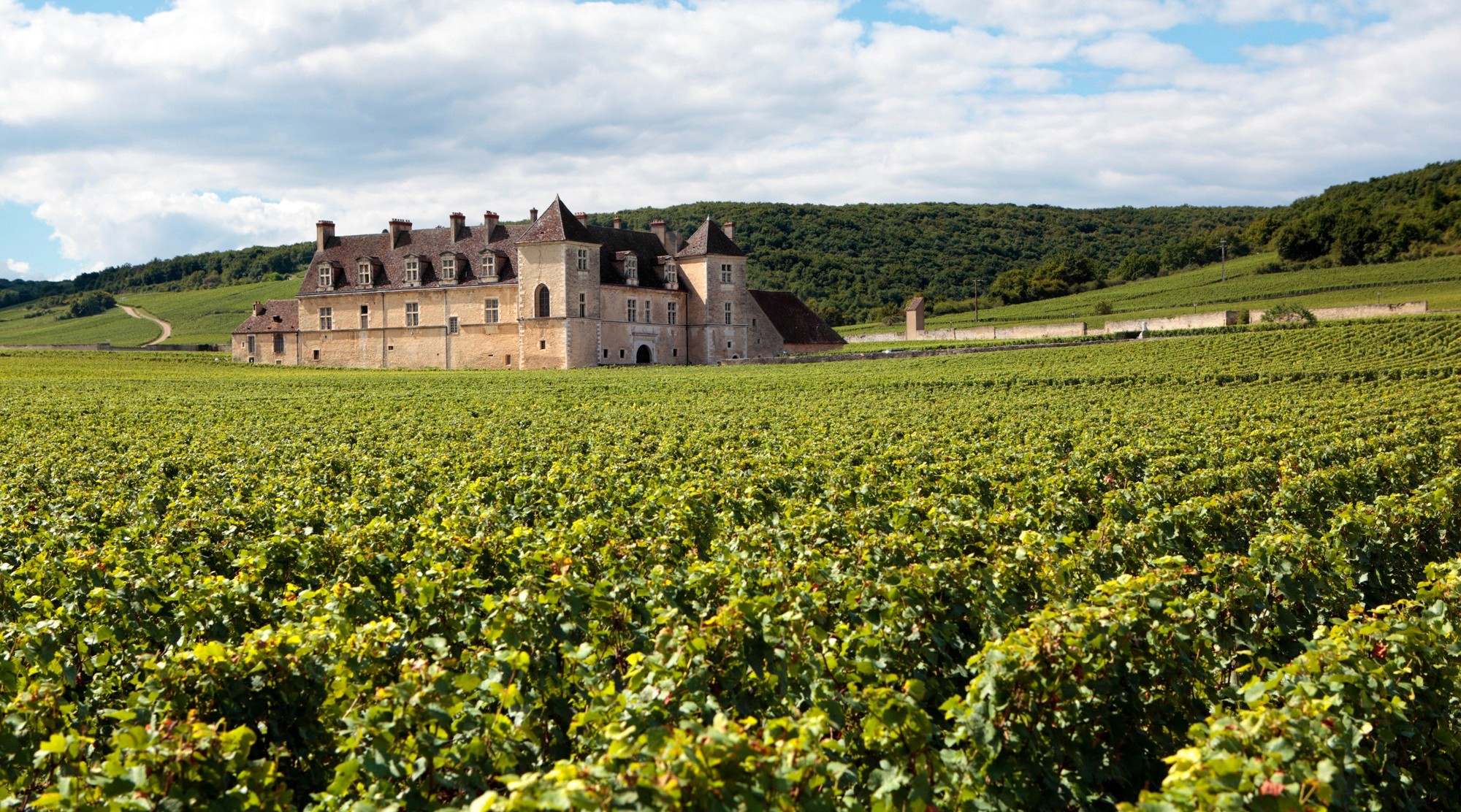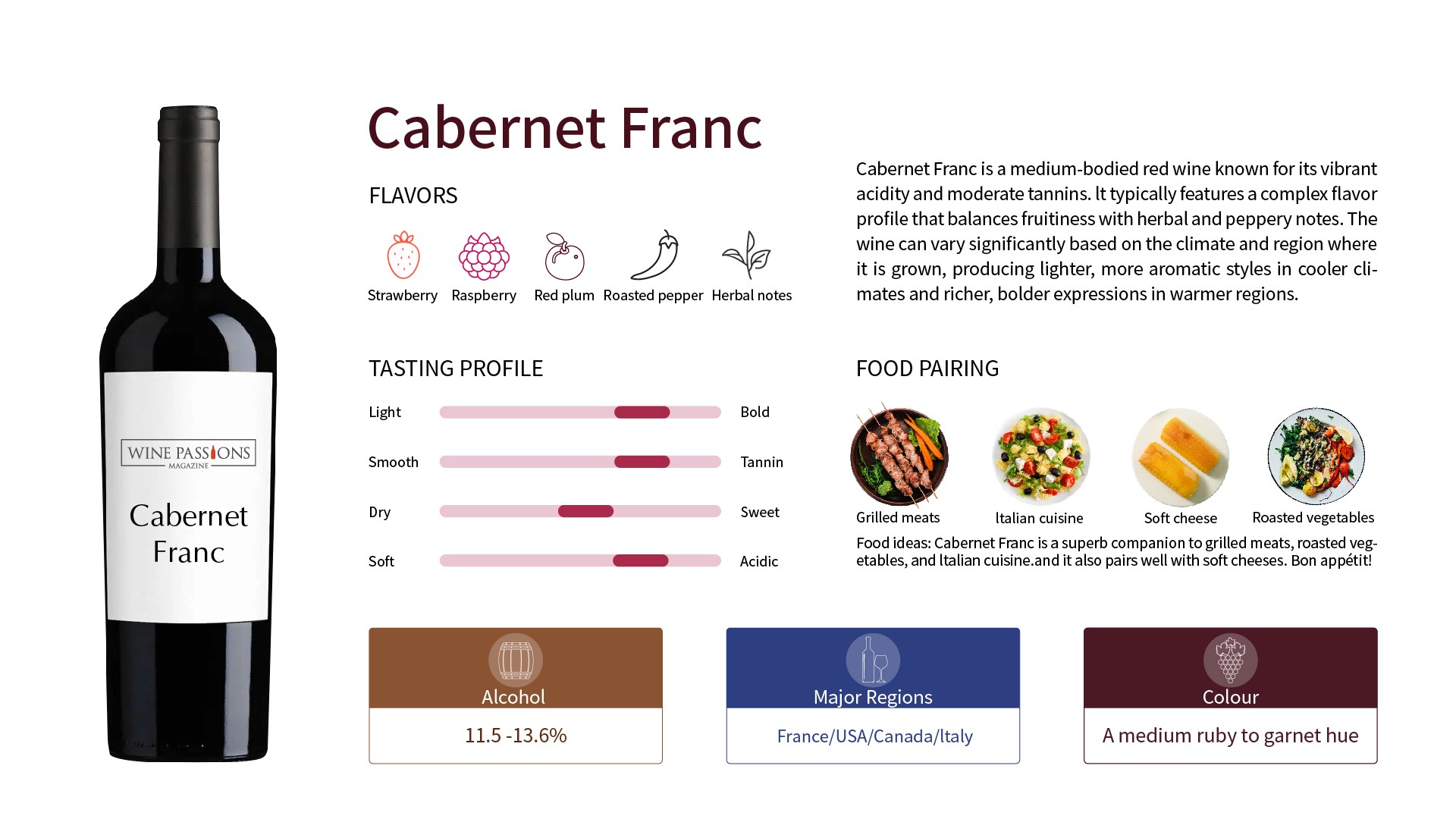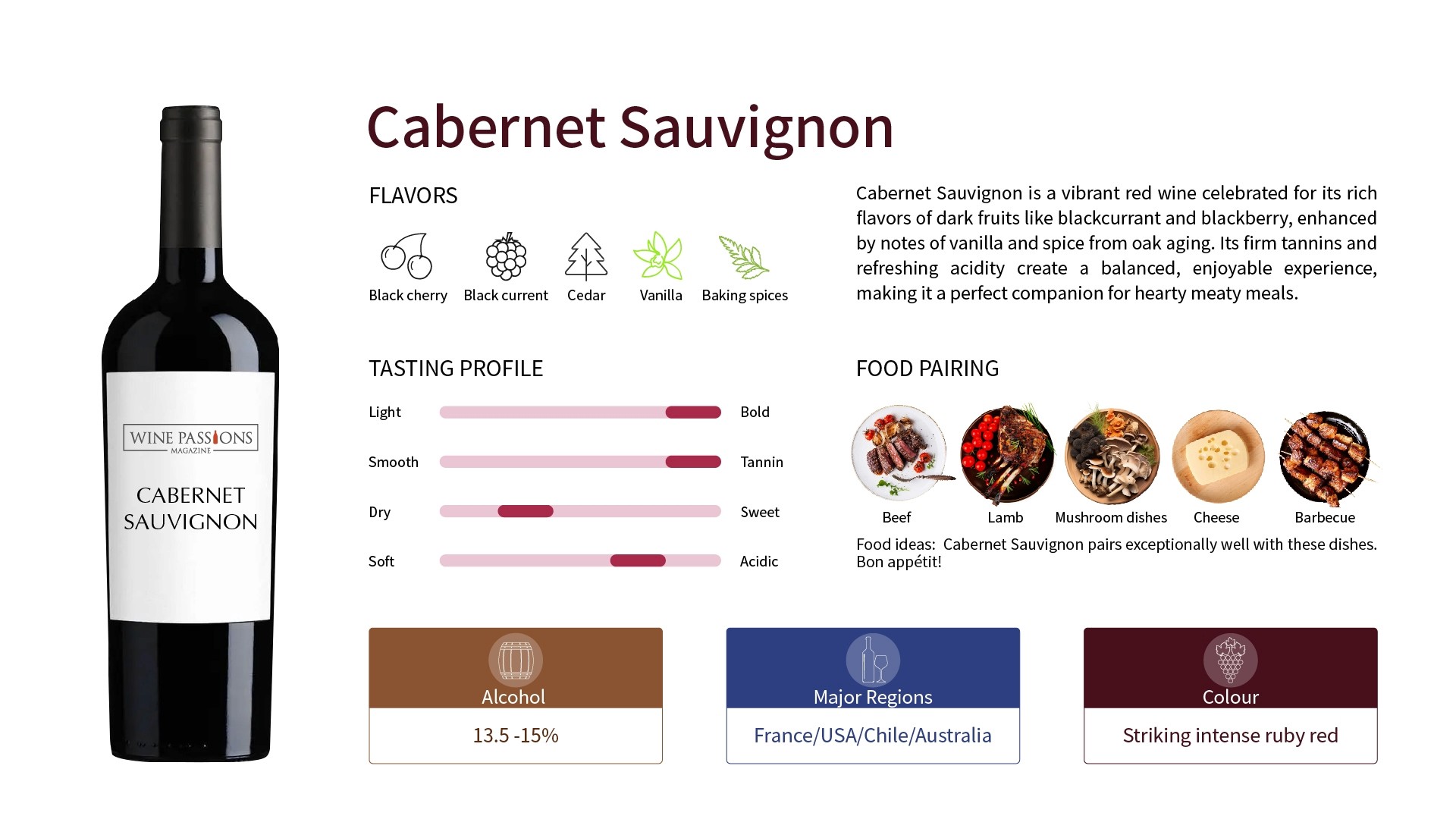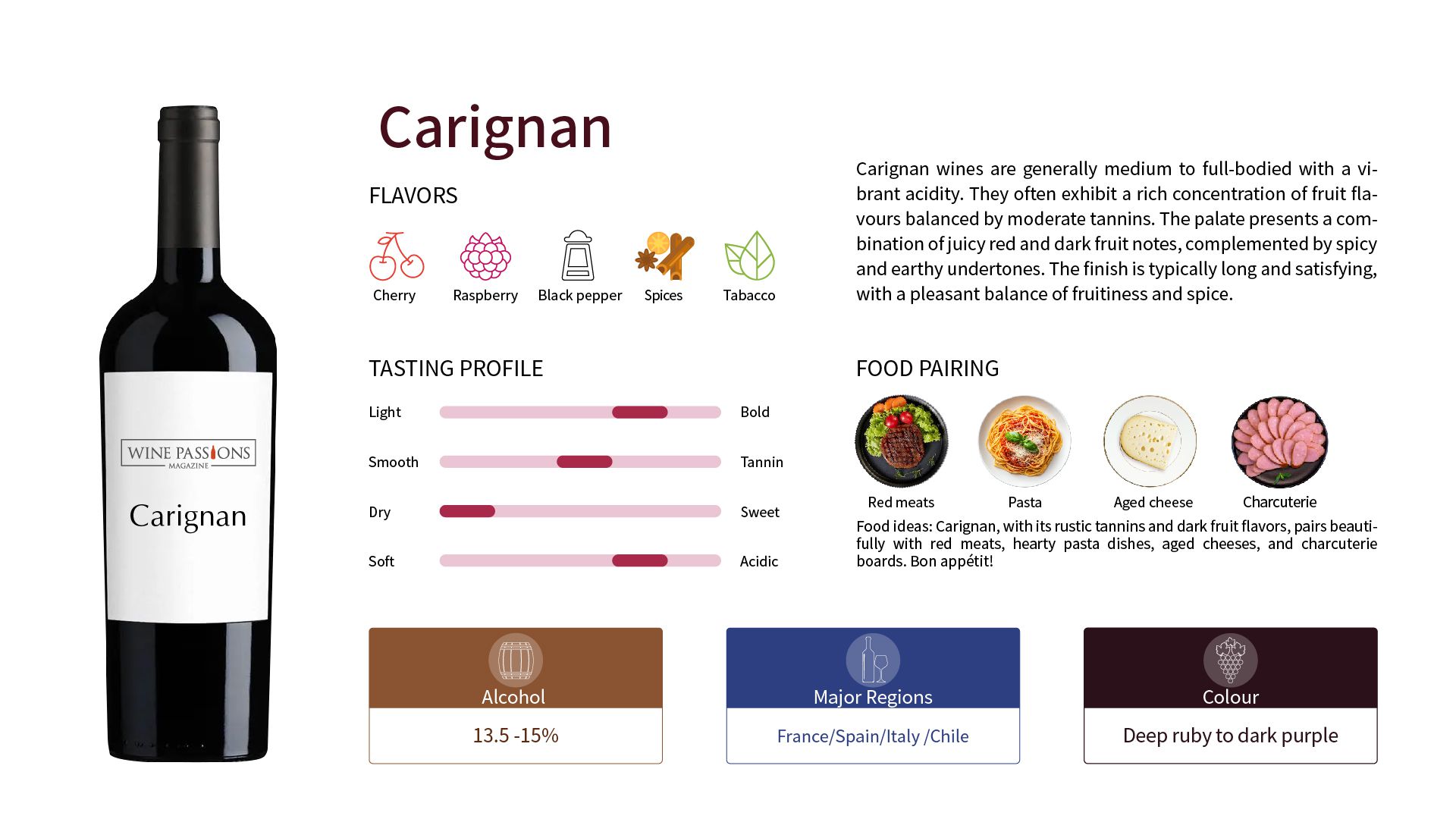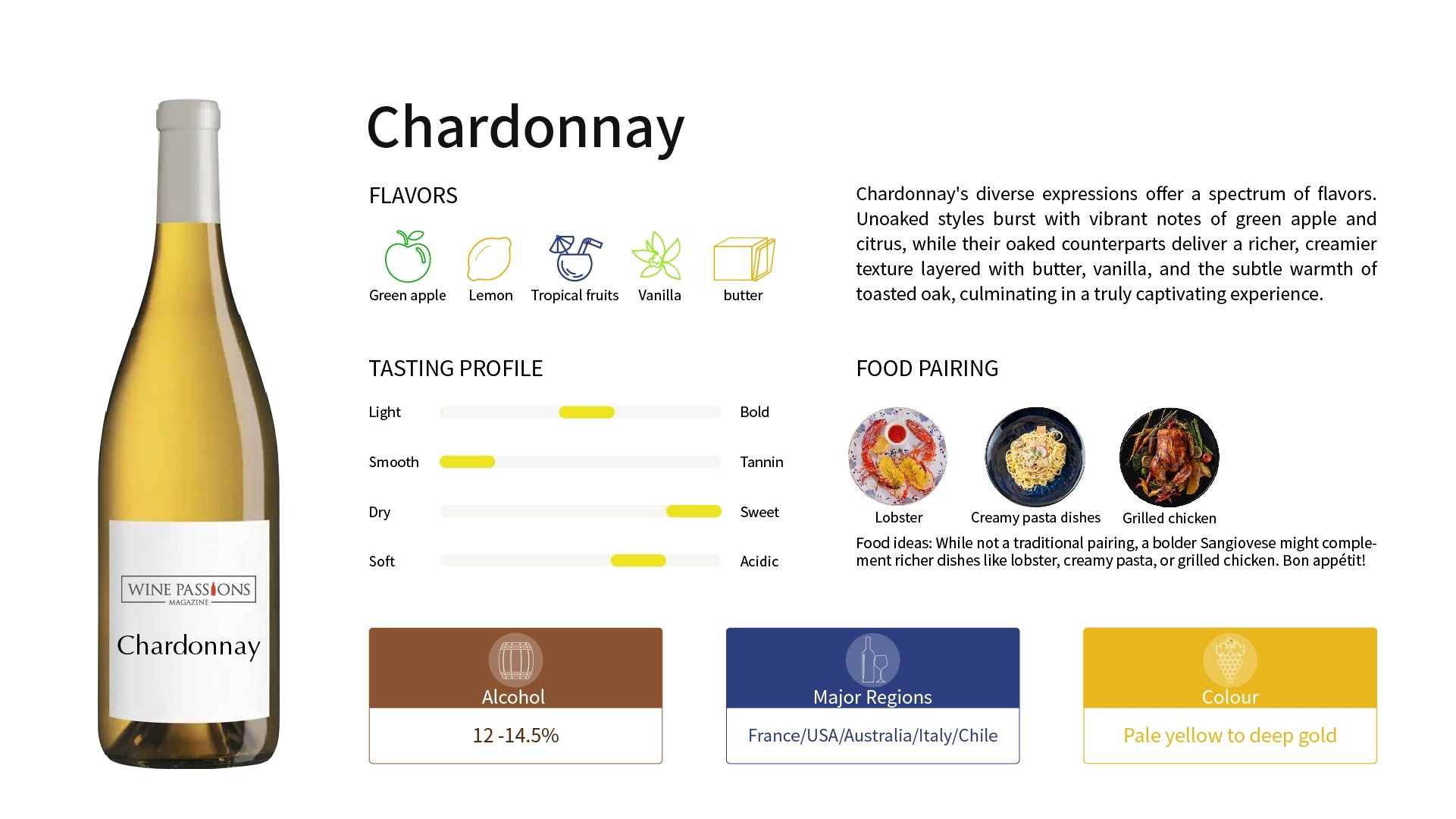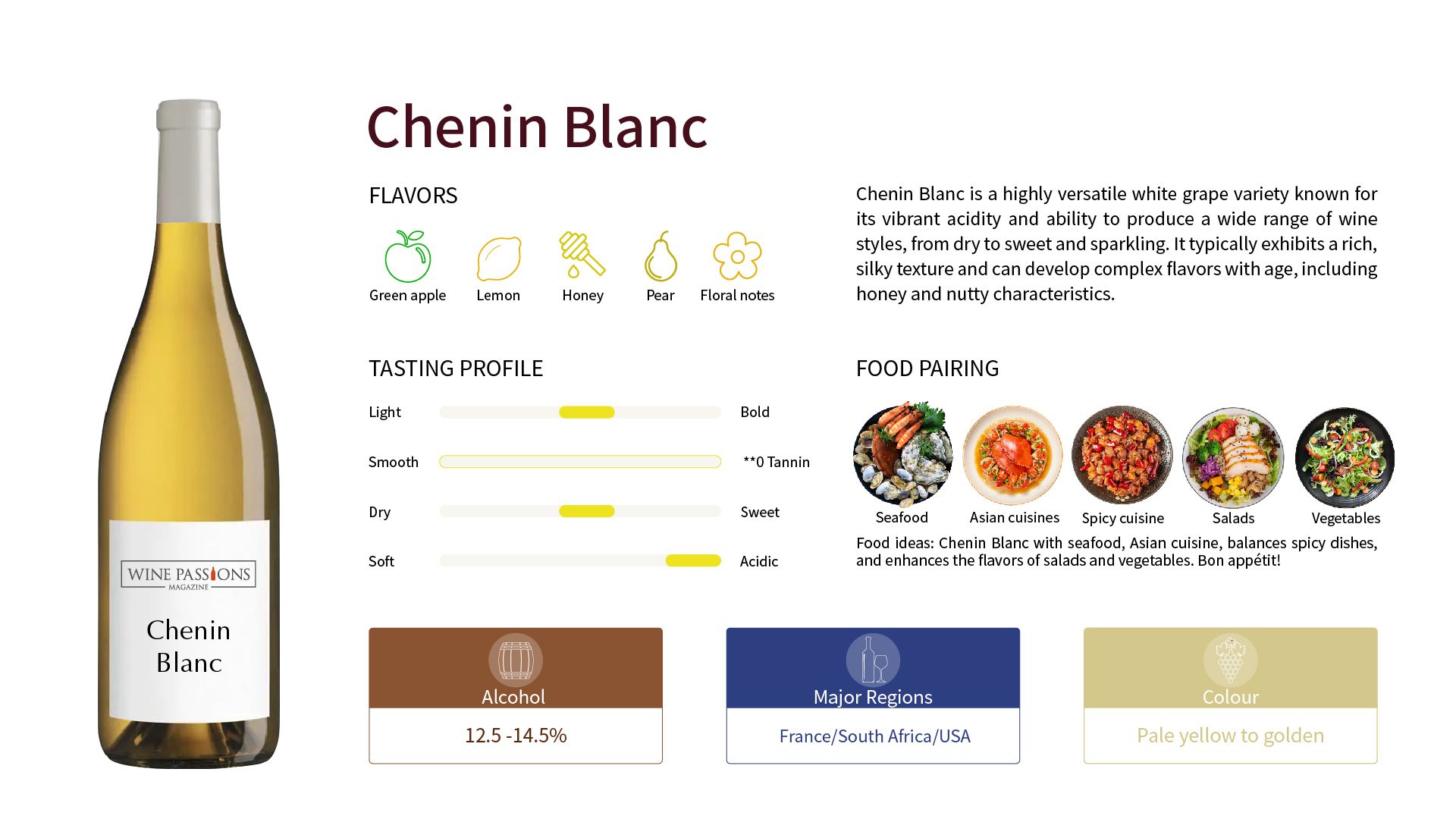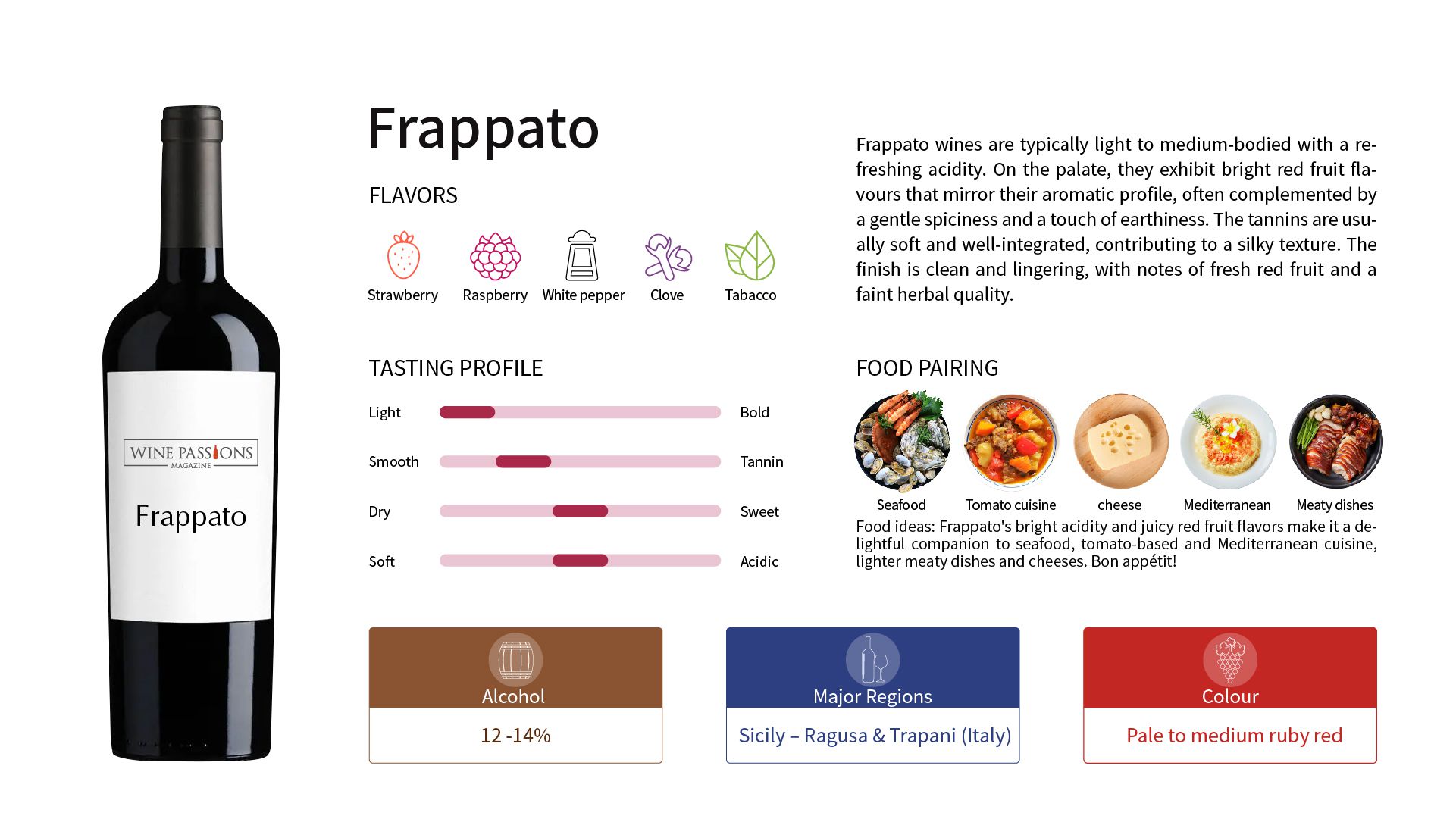Cabernet Franc
Background and Origins
Marsanne grapes originated from the Rhône Valley in southern France and are one of the oldest and most representative white grape varieties of the region. It is said that the name may come from a small town named Marsanne in the Drôme department, where the Marsanne grape was born.
Marsanne is often blended with another white grape variety, Roussanne, but the wine produced from this single variety also has a rich structure and attractive flavors. Over time, Marsanne's reputation has expanded, gradually entering the New World, including Australia, California, and more, adding a unique charm to the global wine map.
Reasons for Popularity
Unique Flavors: The wine showcases ripe fruit aromas, including apricot, orange, peach, and tropical fruits like cantaloupe. Additionally, as it ages, it may reveal slight spice notes, such as cinnamon or pepper, and carries the fragrance of almonds and beeswax, making the overall flavor more complex and balanced.
Good Aging Potential: Known for its high richness and rich structure, it possesses excellent aging potential. Typically, Marsanne wines reach their peak aroma and taste after 10 to 15 years of aging, showcasing incredible depth and a long finish. Over time, the flavors become more complex, adding aromas of nuts and honey, which makes many wine collectors consider it an excellent investment choice.
Versatility: Its strong adaptability allows it to produce a variety of wine styles. From refreshing dry whites to complex sweet whites, and to base wines for sparkling wines, its creativity is nearly limitless. This diversity enables Marsanne to meet the needs of different consumers, whether they prefer refreshing tastes or rich flavors, they can find a suitable Marsanne wine.
Subtle Rarity: As a grape variety with limited production, this rarity is a good choice for collectors seeking unique and high-quality wines, enhancing its investment value. Additionally, many wine enthusiasts are excited to taste the less common yet high-quality Marsanne offerings.
Flavor Characteristics
Fruit Aroma: Primarily expressed as sweet and sour notes such as lemon and citrus aromas, while also having the sweet aroma of ripe pears, peaches, and tropical fruits.
Spice: With aging, it may show slight notes of cinnamon or pepper, along with a touch of minerality, and a faint hint of almond and beeswax fragrance.
Palate: The palate is rich and smooth, with medium to high acidity, and a soft texture that has a hint of oiliness.
Main Production Areas
Rhône Valley, France: This is the birthplace of Marsanne and one of its most classic regions, particularly in the Hermitage and Saint-Joseph areas.
Australia: In Australia, especially in the coastal regions of Victoria, it has developed rapidly in recent years, showcasing its fresh and pronounced fruity personality.
California, USA: In California, Marsanne exhibits a richer and sunnier style, with lower acidity, but the aromas and texture are rounder.
Famous Marsanne Wine
M. Chapoutier Hermitage Blanc 'De L'Orée': comes from the Rhône Valley, the most prestigious Marsanne wine, whose depth and long-lasting finish is considered the 'golden' standard among white wines.
Tahbilk Marsanne: comes from Victoria, Australia, renowned for its excellent aging ability and crisp freshness, making it highly regarded among wine lovers.
Tasting Method
Tasting Temperature: Recommended is 7-13°C
Tasting Glass: It is recommended to use a white wine glass
Decanting Time: No need for decanting
Aging Potential: 5-15 years
Food Pairing
Seafood such as grilled scallops, garlic shrimp
Pasta or mushroom risotto
Spiced white meats like roasted chicken or pork chops
